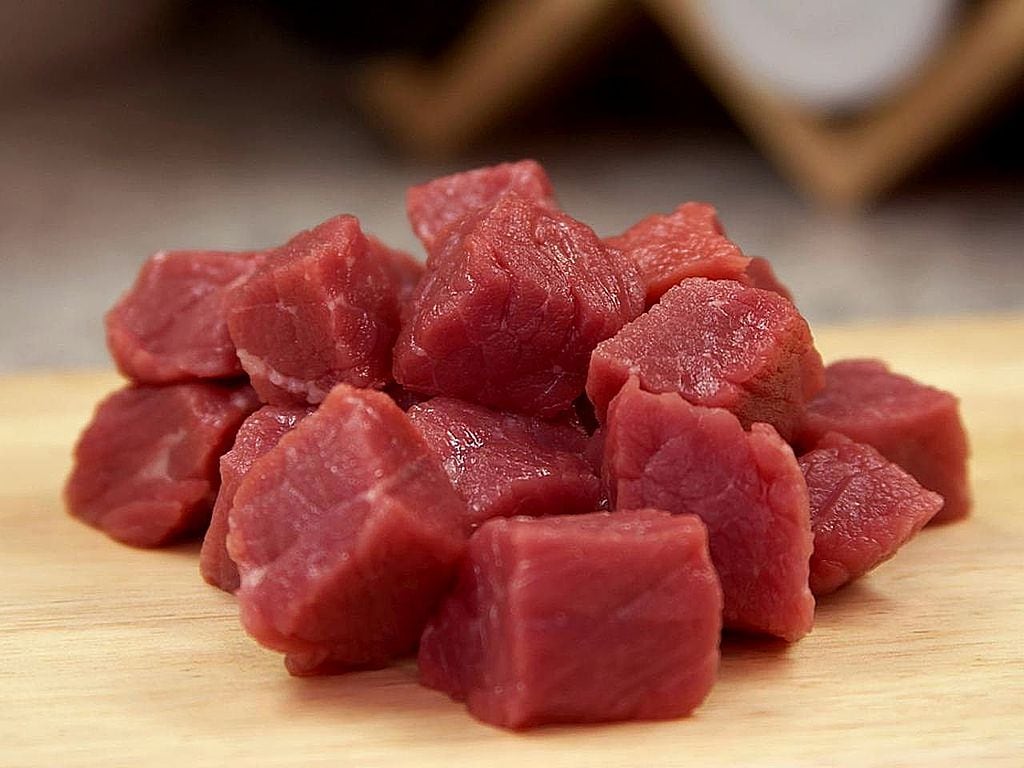We are already seeing a growing number of consumers choosing products made from alternative proteins over meat and dairy, with environmental and health benefits being key drivers.
The European Commission’s Farm to Fork Strategy and the Communication on Europe’s “Beating Cancer Plan” – both launched in 2020 – recognise the role of shifting to a more plant-based diet to stimulate healthier lives, and in the years since we have seen this trickle down to influence the behaviour of consumers, innovators and manufacturers across the food system.
And as the attraction of alternative proteins grows, so too does the demand for products that accurately replicate the appearance, taste, texture and even the smell of meat.
It’s possible that alternative proteins could even gain an edge over animal products when it comes to affordability, with recent economic and political challenges playing a role in widening this gap.
For instance, a recent report by Aarhus University and EIT Food found that consumers are connecting the Russian war against Ukraine with rising costs in red meat, fish and dairy.
There is a clear need to develop and scale a diverse range of alternative proteins to satisfy these varying demands, and we can expect to see some interesting developments in the industry in 2023 and beyond.
Overcoming barriers through innovation
While ‘alternative proteins’ is a useful umbrella term, it encompasses several distinct categories of ingredients and products which are likely to see varying levels of investment, regulation and consumer preference.
For starters, most of us are likely to have tried plant-based meat substitutes which are now commonplace on European and UK supermarket shelves.
These products involve protein formulations derived from plant material which are used to create foods that emulate the sensory experience of meat. While these products are often marketed as healthy alternatives to animal products, they are typically ultra-processed foods, and although they may be fortified with beneficial nutrients, they can be high in sodium and synthetic additives.
Overcoming this barrier will be key in determining the future of plant-based meat substitutes, and we are already seeing impressive and exciting innovators working on healthier alternatives.
Israeli innovators at Gavan Technologies recently unveiled a new process to extract protein from any plant source which uses the entire plant, without wasting any of the source material or modifying the original structure.
As technologies like this scale and become more widespread in manufacturing processes, there is a huge opportunity to improve the nutritional value of plant-based substitutes without having to rely on additives.
However, when it comes to demands for an authentic sensory experience, plant-based substitutes are arguably no match for cultivated meat. Typically produced by growing animal-derived cells in a controlled environment, cultivated meat products have so far faced multiple barriers of regulation and cost.
Breaking down the barriers
But we are gradually starting to see these barriers falling away; Singapore recently became the first country to allow the sale of cultivated meat to consumers, while the US Food and Drug Administration has confirmed for the first time ever that a lab-grown meat product is safe to eat.
Ed Bergen, Senior Analyst for Food and Nutrition at FutureBridge, suggests that deregulation could play a huge role in 2023, if policy and regulation are reduced to allow the acceleration of cultivated meat commercialisation in more parts of the world.
We are also seeing the introduction of protein sources including insects, microalgae, and even jellyfish, that are commonly eaten in other parts of the world but considered novel foods in Europe. These ingredients offer the potential to dramatically reshape the way food is produced when it comes to environmental sustainability, nutritional value and taste.
An increasing consumer appetite for algae-based products means that we could be seeing it become a more common ingredient in food production, with an EIT Food Citizen Participation Forum study on algae revealing that consumers generally understand it to be an environmentally friendly food with health benefits.
We are seeing more innovators exploring algae-based food products, such as Aliga Microalgae, a Scandinavian food-tech start-up developing and producing microalgae ingredients which can be used by manufacturers in plant-based meat alternatives, as well as bakery, savoury, confectionery and many other applications.
Other novel foods like insects still face a high level of scepticism from European consumers. However, insects are increasingly being incorporated into feed for animals and fish, and increased education and awareness could result in these ingredients featuring more widely in food production, with a survey showing that assurances around food safety could convince more UK consumers to try edible insects.
An exciting growth area in innovation for alternative proteins involves proteins synthesised by microorganisms including yeasts, fungi and microbes, using biomass fermentation processes and precision fermentation.
Precision fermentation
A report by the UK Food Standards Agency suggests that among all the categories of alternative proteins, precision fermentation may prove to be the most disruptive over the coming decade, with the potential to upend the dairy industry and egg production.
Like other types of alternative proteins, the success of these ingredients depends on overcoming technological challenges to operate at scale – and innovation has a key role to play in this.
Based in Italy, the tech start-up Yeastime has developed a mechanical treatment technology hardware that can be applied to existing bioreactors in food manufacturing to reduce the time, consumption and energy costs of the fermentation process by 30%.
The other challenge will be to win over consumers, which is again dependent on increasing education and awareness.
To delve into these issues in more detail, EIT Food recently published a white paper on protein diversification. This was done to provide policymakers and agrifood stakeholders with an outlook on the potential of protein diversification, as well as what’s needed to further accelerate innovation in this sector.
As awareness and interest in all of these innovations continues to grow, there is a real need to shift the narrative from alternative proteins to ‘protein diversification’, as developing and scaling a wide range of dietary proteins will be absolutely crucial if our food system is to reach net zero, as well as offer more healthy, nutritious food products that consumers trust, accept and adopt into their diets.




